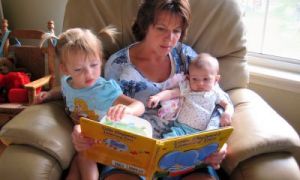Descriptive praise and appreciative praise are powerful tools for encouraging positive behavior and fostering intrinsic motivation in children. The following article provides information on Descriptive Praise, Appreciative Praise, Examples and more.
Descriptive Praise
It is a way of acknowledging children's efforts and behaviors by describing exactly what they did well, rather than using vague or general praise. It helps children understand what they are doing right and encourages them to repeat positive behaviors.
Key Features of Descriptive Praise
- Specific and detailed – Instead of saying "Good job!", say "You worked really hard to build that tower, and you balanced the blocks carefully!".
- Focuses on effort and process – Highlights the child's actions rather than just the outcome.
- Encourages self-awareness – Helps children recognize their strengths and abilities.
- Builds confidence and motivation – Reinforces positive behavior in a meaningful way.
Appreciative Praise
It is a way of recognizing and valuing a child's actions by expressing gratitude for their efforts and contributions. Unlike general praise, it focuses on acknowledging the impact of their behavior on others or their environment.
Key Features of Appreciative Praise
- Expresses gratitude – Shows appreciation for a child's kindness, helpfulness, or responsibility.
- Highlights positive impact – Reinforces how their actions benefit others.
- Encourages intrinsic motivation – Helps children feel valued for their contributions rather than external rewards.
Both types of praise encourage children to develop self-awareness, confidence, and a sense of responsibility.
Examples Of Descriptive Praise
Here are some examples of descriptive praise that you can use in early childhood settings:
Effort-Based Praise
-
"I noticed how hard you worked on that puzzle. You kept trying until you found the right piece!"
-
"You didn’t give up, even though it was tricky. That shows great perseverance!"
Creativity and Expression Praise
-
"You used so many bright colors in your painting! It looks so vibrant and full of energy."
-
"I love how you blended the colors together—it makes your artwork look really unique!"
Social and Emotional Praise
-
"You were so kind to share your toy with your friend. That made them really happy!"
-
"I saw how you helped your friend when they were feeling sad. That was very thoughtful of you."
Problem-Solving and Thinking Praise
-
"You figured out how to stack those blocks so they wouldn’t fall. That was smart thinking!"
-
"I noticed how carefully you planned your tower before building it. That helped you make it strong!"
Independence and Responsibility Praise
-
"You put away all your toys without being asked. That shows great responsibility!"
-
"You remembered to wash your hands before snack time. That was a great choice!"
Examples Of Appreciative Praise
Appreciative praise in early childhood helps children feel valued, recognized, and motivated to continue positive behaviors. Unlike general praise, it focuses on acknowledging the impact of a child's actions on others or their environment.
Examples of Appreciative Praise
-
"Thank you for helping your friend clean up. That made the space tidy for everyone!"
-
"I appreciate how you shared your toy. That was very kind and made your friend happy!"
-
"You listened so carefully during story time. That helped everyone enjoy the book!"
-
"I love how you helped set up the snack table. It made things easier for everyone!"
Why Appreciative Praise Matters
-
Builds empathy – Helps children understand how their actions affect others.
-
Encourages cooperation – Reinforces teamwork and social responsibility.
-
Boosts intrinsic motivation – Children feel proud of their contributions rather than seeking external rewards.







 As an Educator in Australia, your pay rate falls under the Children’s Services Award 2010. This award states the minimum amount that an employer can
As an Educator in Australia, your pay rate falls under the Children’s Services Award 2010. This award states the minimum amount that an employer can When working as a qualified Early Childhood Teacher (with a university degree) within a service, your rate of pay will come from the Educational Services
When working as a qualified Early Childhood Teacher (with a university degree) within a service, your rate of pay will come from the Educational Services When working as a Diploma Qualified Educator your pay rate is from the Children's Services Award 2010. This Award states your minimum rate of pay
When working as a Diploma Qualified Educator your pay rate is from the Children's Services Award 2010. This Award states your minimum rate of pay When working as a Cert 3 Qualified Educator, your pay rate is from the Children's Services Award 2010. This Award states your minimum rate of
When working as a Cert 3 Qualified Educator, your pay rate is from the Children's Services Award 2010. This Award states your minimum rate of Educational Leaders play a crucial role in their early childhood service by ensuring that the educational program aligns with best practices and supports the holistic
Educational Leaders play a crucial role in their early childhood service by ensuring that the educational program aligns with best practices and supports the holistic In early childhood education and care, ratios are more than a technicality—they are a frontline safeguard. Every child deserves responsive supervision, emotional connection, and developmental
In early childhood education and care, ratios are more than a technicality—they are a frontline safeguard. Every child deserves responsive supervision, emotional connection, and developmental Here’s a comprehensive Mobile Phone and Smart Watch Policy tailored for early childhood education and care (ECEC) services in Australia, aligned with the latest 2025
Here’s a comprehensive Mobile Phone and Smart Watch Policy tailored for early childhood education and care (ECEC) services in Australia, aligned with the latest 2025 With the new national child safety reforms kicking in on 1 September 2025, early childhood services like yours have a real opportunity to lead the
With the new national child safety reforms kicking in on 1 September 2025, early childhood services like yours have a real opportunity to lead the The Sea of Fish Challenge is a national initiative that invites children, educators, families, and communities to create and display fish artworks as a symbol
The Sea of Fish Challenge is a national initiative that invites children, educators, families, and communities to create and display fish artworks as a symbol Across the early childhood education and care sector, educators are sounding the alarm: current staffing ratios are insufficient to deliver safe, meaningful, and developmentally appropriate
Across the early childhood education and care sector, educators are sounding the alarm: current staffing ratios are insufficient to deliver safe, meaningful, and developmentally appropriate


